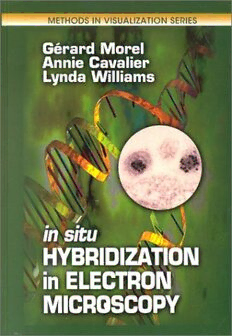
In Situ Hybridization in Electron Microscopy (Methods in Visualization) PDF
473 Pages·2001·18.162 MB·English
Most books are stored in the elastic cloud where traffic is expensive. For this reason, we have a limit on daily download.
Preview In Situ Hybridization in Electron Microscopy (Methods in Visualization)
Description:
In situ hybridization is a technique that allows for the visualization of specific DNA and RNA sequences in individual cells, and is an especially important method for studying nucleic acids in heterogeneous cell populations. in situ Hybridization in Electron Microscopy reviews the three main methods developed for the ultrastructural visualization of genes: ° hybridization on ultrathin sections of tissue embedded in hydrophilic resin (post-embedding method)° hybridization prior to embedding (pre-embedding)° hybridization on ultrathin sections of frozen tissue (frozen tissue method). For each technique, the different stages are described in detail: the preparation of tissue, pretreatment, hybridization, and visualization of the hybridization products. The book combines theory and practice, starting with the basic principles, then breaking down the experimental process into successive steps illustrated by numerous diagrams, detailed protocols, and tables. This is all done in a format that uses parallel columns to convey useful comments next to the theory and practical details alongside each stage of the protocol. Additionally, the summary tables provide the criteria for choosing the probe type and technique, and a detailed index aids in the search for information. in situ Hybridization In Electron Microscopy is an essential companion for applying these methods at the electron microscopic level.
See more
The list of books you might like
Most books are stored in the elastic cloud where traffic is expensive. For this reason, we have a limit on daily download.
